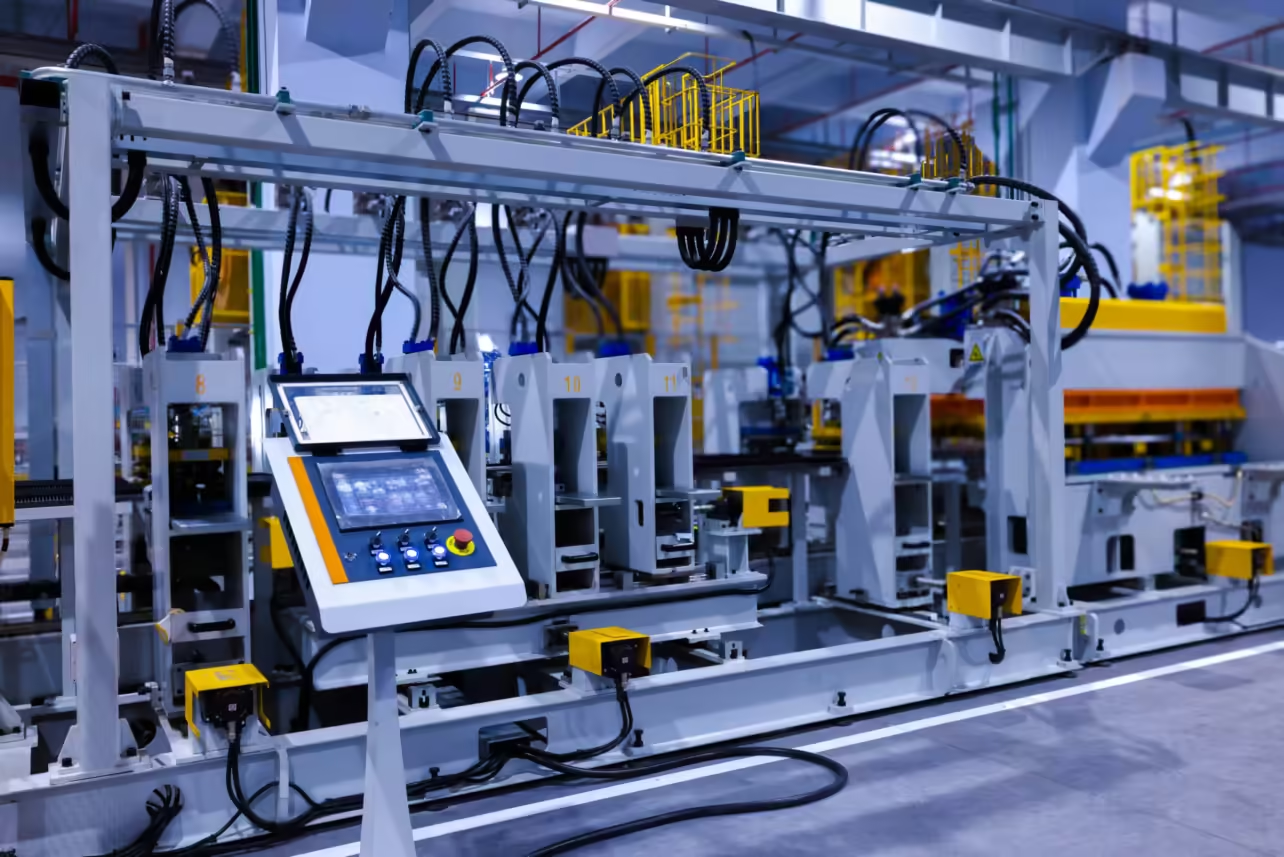Introduction
Industrial automation is transforming modern manufacturing by enhancing productivity, reducing errors, and optimizing operations. By leveraging advanced technologies, factories can achieve greater efficiency and reliability. This guide covers different solutions for industrial automation, including their benefits, types, technologies, steps for implementation, and future trends.
Benefits of Industrial Automation
Automated systems have various benefits that contribute to a more efficient and safer workplace. They allow for increased productivity, as they are capable of continuous operation without breaks, resulting in higher output levels.
In addition, automation helps reduce human error, which ultimately improves product quality and consistency. By using resources more efficiently and reducing the need for labor, it also helps to lower overall operational costs. Automated systems can make workplaces safer by doing dangerous tasks, reducing the risk of injuries for humans.
Types of Industrial Automation Systems
There are several types of industrial automation systems, each suited for different manufacturing needs:
- Fixed Automation: Ideal for mass production with a high volume of products, such as in automotive manufacturing.
- Programmable Automation: Allows for batch production and flexibility in manufacturing different products using the same equipment.
- Flexible Automation: Enables the production of varied products without significant time loss in changing production setups.
- Integrated Automation: Combines every step of production, from raw materials to finished products, in one smooth system.
In addition to these types, understanding open-loop vs closed-loop systems is crucial. Open-loop systems do not use feedback, so they are simpler but less adaptable. Closed-loop systems use feedback to adjust operations, improving precision and control.
Key Technologies in Industrial Automation
The following technologies are driving advancements in industrial automation:
- Programmable Logic Controllers (PLCs): Essential for controlling machinery and ensuring operational consistency.
- Supervisory Control and Data Acquisition (SCADA): Provides real-time data monitoring and control over industrial processes.
- Distributed Control Systems (DCS): Manages complex processes by distributing control functions throughout the system.
- Robotics: Enhances precision and efficiency in tasks such as assembly, welding, and packaging.
- Artificial Intelligence (AI): Optimizes operations through predictive maintenance and intelligent decision-making.
These technologies form the backbone of systems for industrial automation, integrating various devices and software to streamline manufacturing processes.
Industry 4.0 and Smart Manufacturing
Industry 4.0 represents the integration of digital technologies in manufacturing.
IoT, or the Internet of Things, connects different devices and systems to share data and optimize processes. Similarly, Cyber-Physical Systems merge physical processes with computational models to enhance control and monitoring capabilities. Through the use of big data analytics, businesses can improve their decision-making processes and operational efficiency. Smart Factories utilize interconnected systems and data-driven processes to create adaptable production environments for increased flexibility.
Central to these advancements is industrial process control, which ensures that all automated systems function cohesively and efficiently, maintaining optimal production conditions.
Implementing Industrial Automation Solutions
Implementing industrial automation involves several crucial steps:
- Needs Assessment: Evaluate the specific needs and goals of the manufacturing process.
- Technology Selection: Choose appropriate automation technologies that align with the production requirements.
- Integration Planning: Develop a detailed plan for integrating automation systems into existing processes.
- Staff Training: Ensure that employees are adequately trained to operate and maintain the new systems.
- Implementation: Execute the integration plan, monitor progress, and make adjustments as necessary.
Case Studies of Successful Automation
Robots on assembly lines have made car production faster and more precise. Automation is crucial for increasing efficiency and decreasing waste in the food and beverage industry. It is particularly beneficial in areas such as packaging and quality control. In electronics manufacturing, the adoption of PLCs and SCADA systems has resulted in more precise operations and decreased downtime.
Future Trends in Industrial Automation
Emerging trends are shaping the future of industrial automation:
- AI Advancements: Continued integration of AI for predictive maintenance and process optimization.
- Increased Connectivity: Enhanced communication between devices and systems through IoT.
- Sustainable Automation: Focus on eco-friendly technologies and practices to reduce environmental impact.
- Evolution of Smart Factories: Further development of interconnected, adaptive manufacturing environments.
Conclusion
Industrial automation is revolutionizing manufacturing, offering significant benefits in productivity, efficiency, and safety. By understanding the various types of automation systems, key technologies, and implementation strategies, businesses can effectively navigate the transition to automated processes. Staying informed about future trends ensures continued growth and competitiveness in the ever-evolving industrial landscape.

No comments yet